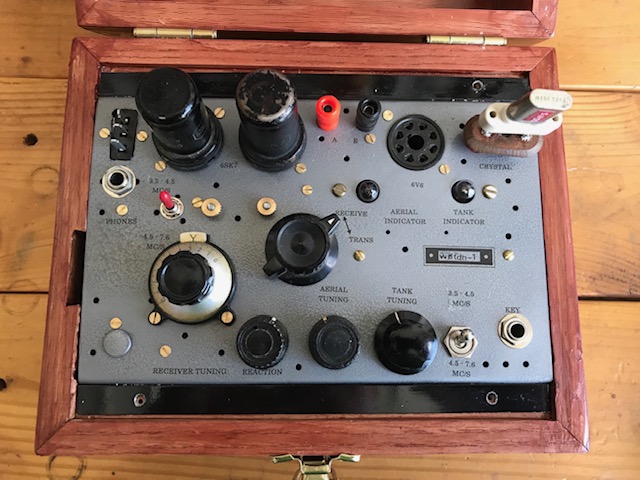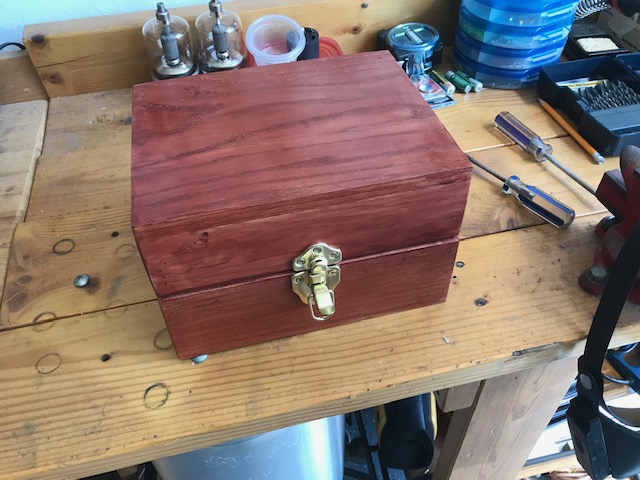K0ETD Paraset Clandestine Radio Set
Back to K0ETD Page
 |
||
|
|
||
|
|
||
|
| ||
| George, W8VG, commented on Facebook: This is the work of my neighbor Ron K0ETD—a member of our AM group in Tucson. It’s a working replica of a WW2 “Paraset”—the compact CW transceivers used by resistance groups in occupied Europe to communicate back to England. Very compact design consisting of regen receiver and low power xtal controlled CW transmitter. He received the panel from a friend back east and did all the electronic construction and painting/labeling himself. Another friend made the nice cabinet. Have heard it on the air—makes a clean CW note. I’ve operated and shared a number of Ron’s homebrew creations with the group—he does first-rate work! |
||
|
|
||
|
|
|
|
|
| ||
|
The Paraset was a small,
low-power, thermionic valve CW morse code-only radio
transmitter-receiver supplied to the resistance groups in France,
Belgium and the Netherlands during World War II. The Paraset was one of the first successful miniaturized radio sets for Britain's Special Operations Executive which conducted espionage and other activities behind German lines during World War II. The set, known as the Whaddon Mark VII, was used for clandestine radio communication primarily in Norway and Europe, developed at the Royal Signals Special Communications Unit workshops at Little Horwood and the workshops of Whaddon Hall, Buckinghamshire in the early stages of World War II. The equipment is known as the “Paraset” because it was dropped by parachute for field agents. |
||
|
|
||
|
|
Paraset underside view |
|
 |
||
| The
schematic of the original paraset. The transmitter is the single
6V6 operated as a crystal-controlled oscillator and amplifier with a
nominal output power of 5 watts. It covers the frequency range of
3.5 to 7.6 MHz in two bands. The receiver consists of two tubes,
both 6SK7's. The first tube is a regenerative detector. It
feeds its detected audio to the second 6SK7 which amplifies it to
headphone level. The original receiver frequency range was
covered in one band, which made tuning difficult. The K0ETD
version splits the coverage into two bands. |
||


